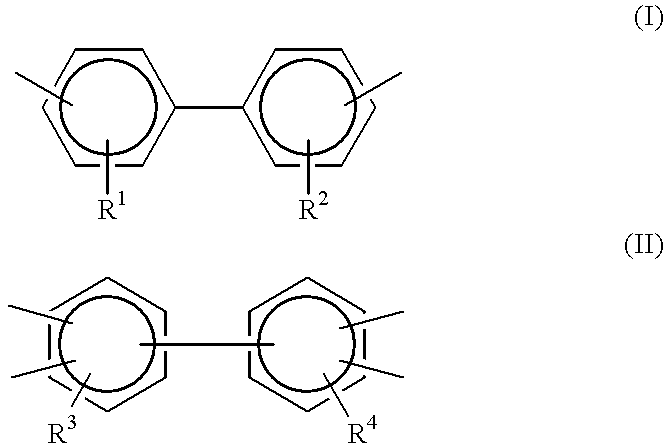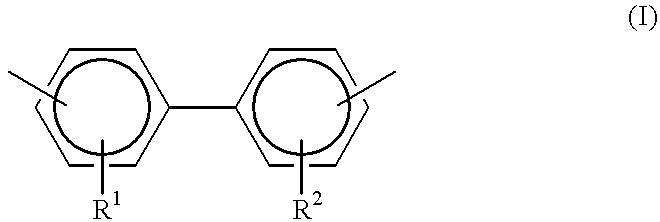Insulated wire
a technology of insulated wires and insulators, applied in the direction of insulated conductors, insulators, plastic/resin/waxes insulators, etc., can solve the problems of limiting the resistance to external scratches and insufficient resistance, and achieve the effect of excellent resistance to external scratches or damag
- Summary
- Abstract
- Description
- Claims
- Application Information
AI Technical Summary
Benefits of technology
Problems solved by technology
Method used
Image
Examples
Embodiment Construction
The present invention is described in more detail based on the following examples, but the invention is not to be limited to those.
The following Table 1 shows compositions (molar ratio) of components contained in each resin used for the insulating layer of the insulated wire in each Example and Comparative Example.
Preparation of Polyamidimide Resin-Series Enamel and Polyimide Resin-Series Enamel
A mechanical-type rotary agitating apparatus and a heating device were fitted to a three necked flask of 3-liter volume, with a condensation tube attached, into which flask an inert gas could be introduced. Into this flask, N-methyl-2-pyrrolidone, as a solvent, and xylene, as a dehydration solvent, were poured, so that the ratio (by weight) of the former to the latter would be 8:2. While being agitated at room temperature, a polyvalent (polyhydric) carboxyl acid and a polyvalent isocyanate, as shown in Table 1, were added thereto, so that the total amount of each constituent of the polyvalent...
PUM
| Property | Measurement | Unit |
|---|---|---|
| Fraction | aaaaa | aaaaa |
| Percent by mass | aaaaa | aaaaa |
| Percent by mass | aaaaa | aaaaa |
Abstract
Description
Claims
Application Information
 Login to View More
Login to View More - R&D
- Intellectual Property
- Life Sciences
- Materials
- Tech Scout
- Unparalleled Data Quality
- Higher Quality Content
- 60% Fewer Hallucinations
Browse by: Latest US Patents, China's latest patents, Technical Efficacy Thesaurus, Application Domain, Technology Topic, Popular Technical Reports.
© 2025 PatSnap. All rights reserved.Legal|Privacy policy|Modern Slavery Act Transparency Statement|Sitemap|About US| Contact US: help@patsnap.com



